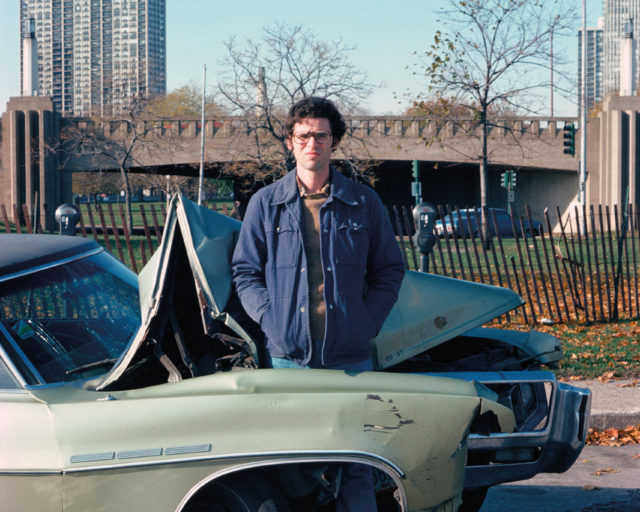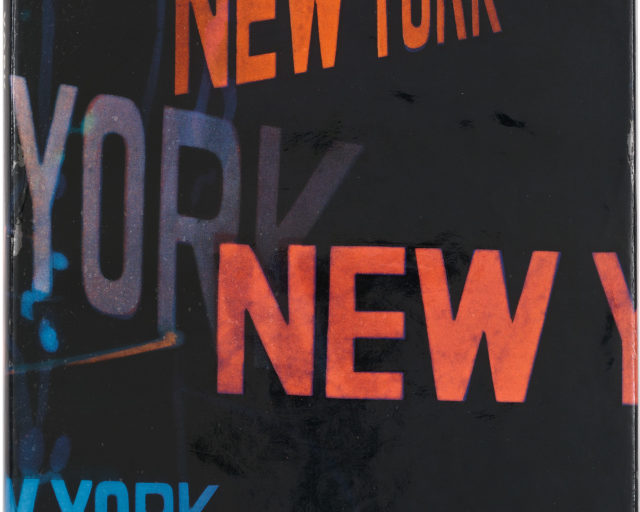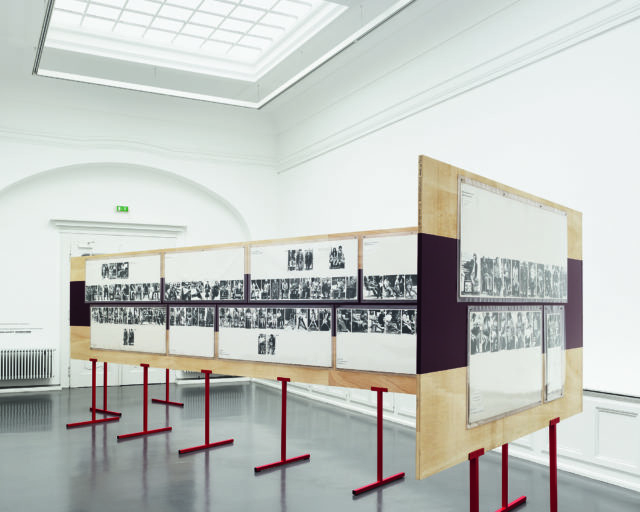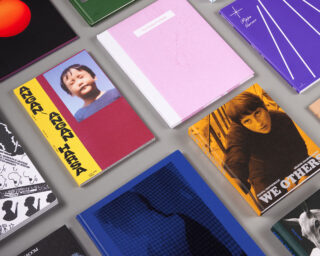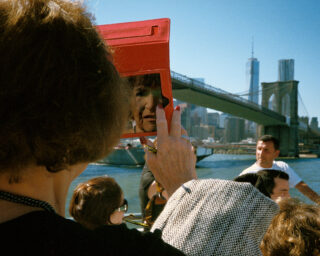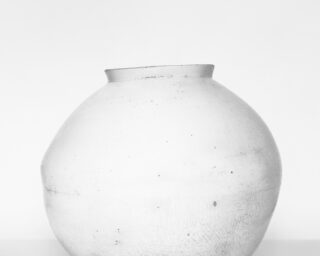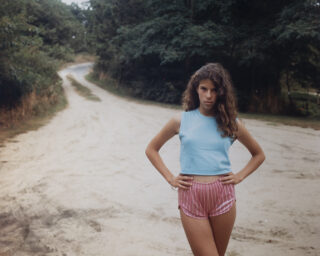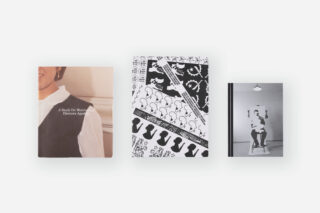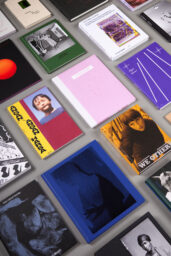Robert W. Kelley, Teenagers screaming and yelling during Elvis Presley’s personal appearance at the Florida Theatre, Jacksonville, FL, August 1956 © the artist/The Life Picture Collection/Getty Images
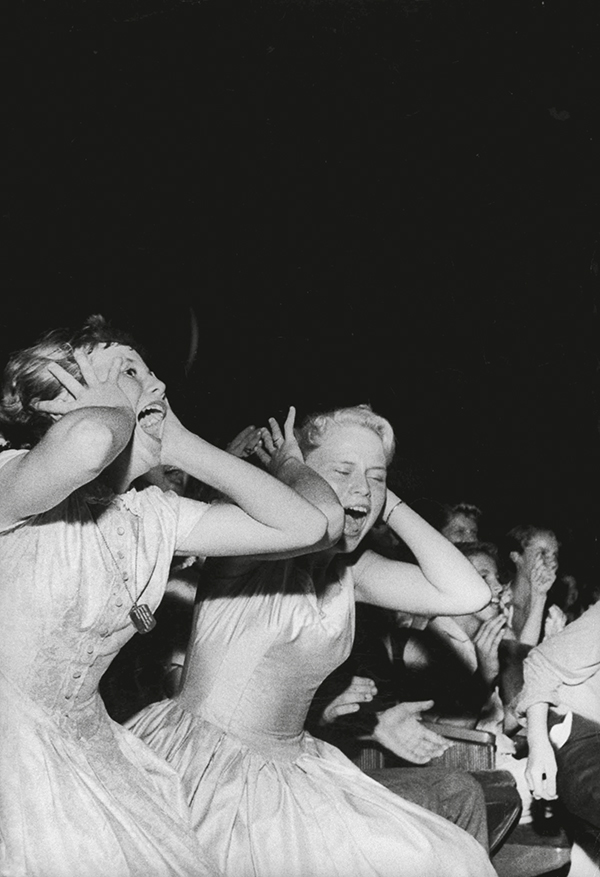
They’re on their own Tilt-a-Whirl. The sound coming out of their mouths is deafening. There is so much spinning movement in the picture that the fact that you actually can’t hear anything, because you’re looking at a photograph, can feel like proof that the sound they’re making has overwhelmed your senses.
— Greil Marcus, music journalist and cultural critic
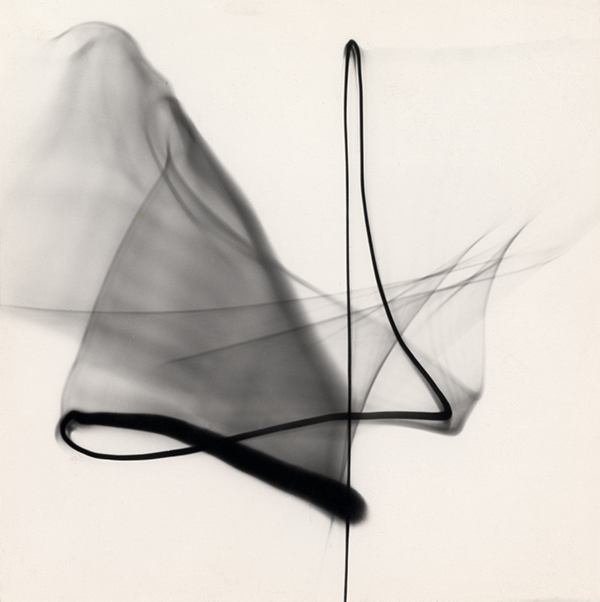
Light shining in black on a white ground; black circles, which leave a white trace on paper—transformations that Zamecznik developed to create a visual equivalent of contemporary music. Two great passions of this architect and graphic designer meet: music and photography, which, in dialogue with graphic design, became his trademark. What can we see under half-closed eyes while listening to Penderecki, Lutosławski, or Bacewicz? A thing becomes its opposite, a single line transforms into fog, a sequence of rhythms.
— Karolina Ziebinska-Lewandowska, Curator of Photographs, Centre Pompidou

Science during wartime changes art during peacetime. Such is the history of the electronic strobe light in the hands of artist-engineer Harold E. Edgerton, who made iconic photographs of bullets caught in midflight, bursting balloons, and exploding apples. The art and science of depicting loud, noisy, and murderous booms and bangs was Cold War business at its best—and Antique Gun Firing was a quaint prelude of what was to come. New cameras developed by Edgerton’s defense-contract company EGG would permit us to see some of the first hydrogen bomb explosions, not as deafening and deadly but as silent and cold.
— Jimena Canales, Thomas M. Siebel Chair in the History of Science, University of Illinois

“The camera offers a way of sublimating the indefinable longing that is aroused in me by close association with birds,” Eliot Porter once said. Sublimate: from the (medieval) Latin limare, to polish or perfect. Perfection must have meant stillness to Porter. That stillness mutes his scenes of woodlands and water, invariably enveloped in a deathly hush. Porter’s bird pictures convey instead the thudding whisper of air currents beaten into eddies by outspread wings. What Porter longed to possess, I imagine, is avian alertness. I can conjure that attentive state not by what I see—too fully or easily—but by the whoosh I almost picture myself hearing.
— Matthew Witkovsky, Curator and Chair, Department of Photography, the Art Institute of Chicago
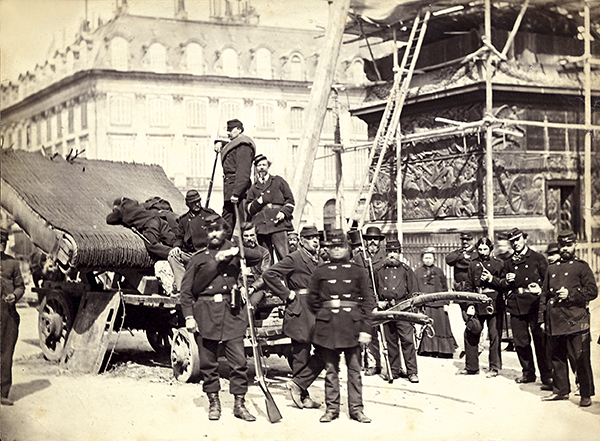
Chantons la liberté, / Défendons la cité! Deaf photographer Bruno Braquehais did not hear the special version of “La Marseillaise”—or the gunfire—that punctuated preparations for the destruction of the Vendôme Column in Paris on May 16, 1871. His picture exudes a dreadful silence that portends the suppression of the Commune during the Bloody Week that commenced five days later.
— Stephen Pinson, Curator, Photographs, the Metropolitan Museum of Art
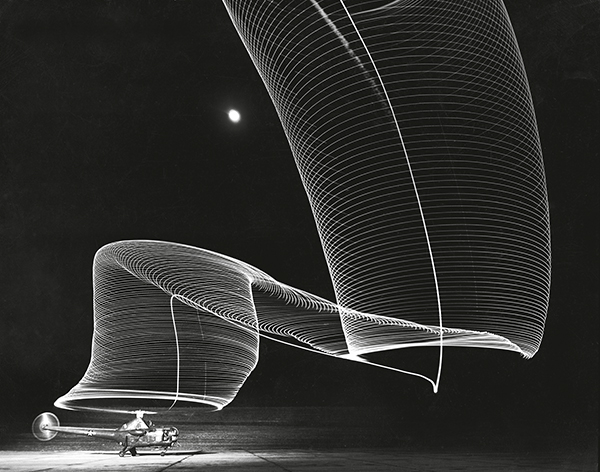
Andreas Feininger sketches in the darkness using the light-tipped wings of a U.S. Navy helicopter. It’s a slinky tipped over the stairs by a three-year-old. It’s a single note, holding steady, wavering down to a flat, then ascending through the scale in joyous uplift. It’s a drone whose timbre changes, resonating first in your ear then in your chest. Light becomes line becomes sound, all in the space between eye and mind.
— Brian Sholis, Curator of Photography, Cincinnati Art Museum
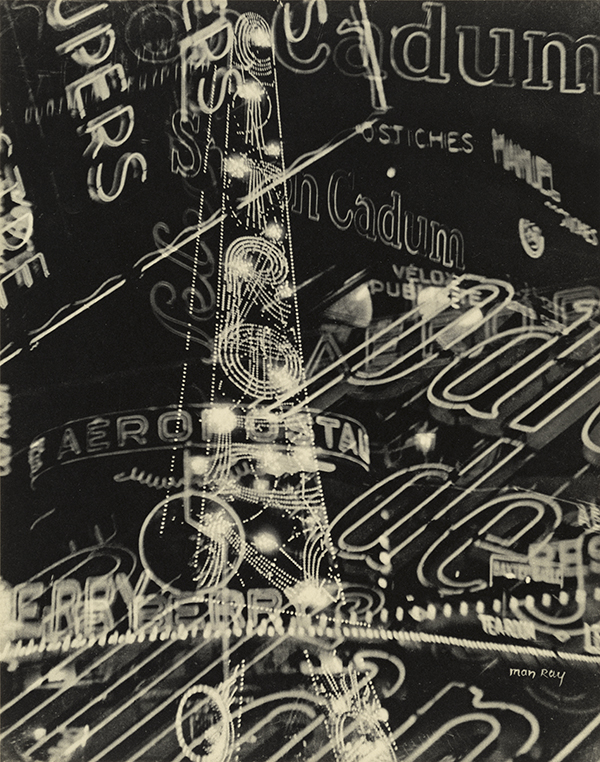
The City—one of ten photogravures that Man Ray produced for a portfolio commissioned by La Compagnie Parisienne de Distribution d’Électricité to promote domestic uses of electricity—pulses with energy. An illuminated Eiffel Tower is overlaid with neon advertisements, creating a visual cacophony of “voices” that compete for our attention.
— Virginia Heckert, Curator, Photographs, the J. Paul Getty Museum
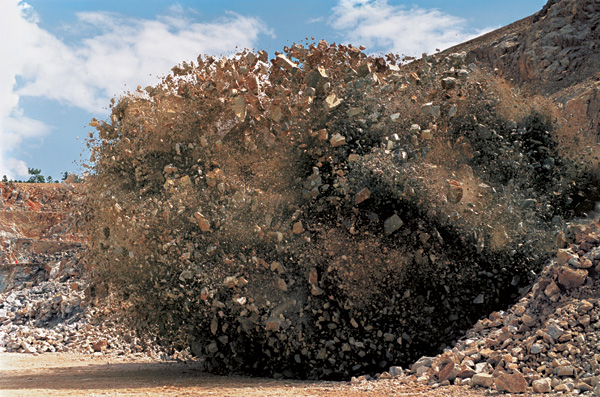
Confronted by Hatakeyama’s Blast, I can’t help but imagine the deafening explosion of dynamite that sent this barrage of limestone hurtling toward us and the impenetrable ear-ringing silence left in its wake. Blast is part of a series that traced the journey of limestone from quarry to cement works to Tokyo towers.
— Malcolm Daniel, Gus and Lyndall Wortham Curator of Photography at the Museum of Fine Arts, Houston
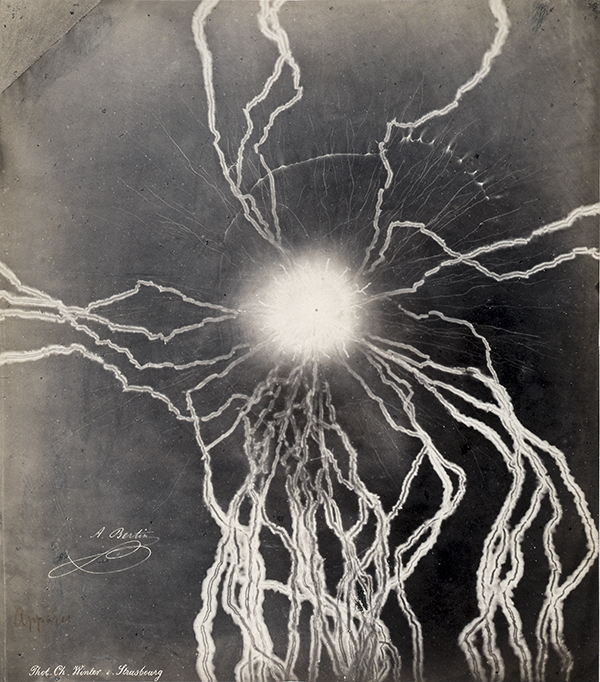
Crackling with potential, capturing a discharge equally capable of initiating life or dealing death, this photograph from about 1865, by French photographer Charles David Winter, records a spark of electricity generated at high voltage. An image much like this one was chosen by André Breton as an example of automatic writing to illustrate his essay “Beauty Will Be Convulsive,” published in the Surrealist magazine Minotaure in 1934. Here, science and art join forces in a cacophony of elemental visual static.
— Geoffrey Batchen, author, most recently, of Emanations: The Art of the Cameraless Photograph, 2016
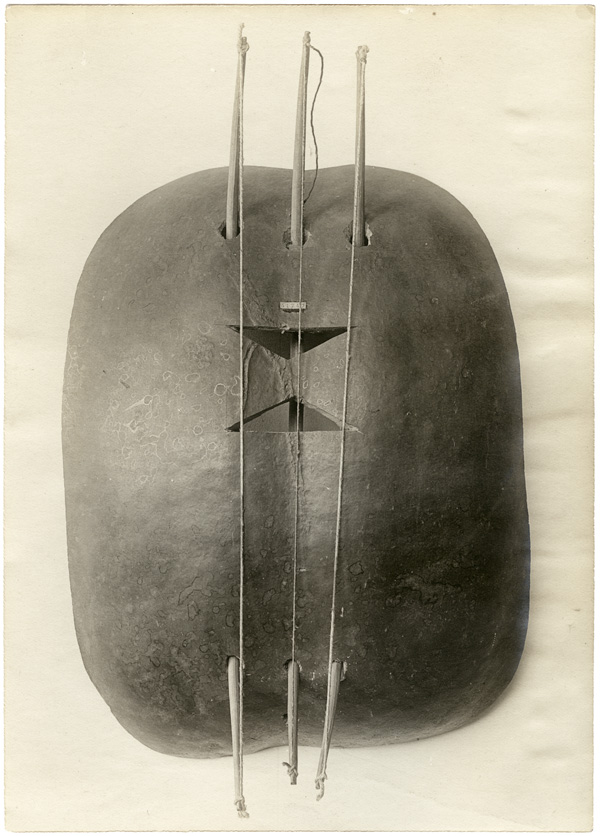
This instrument, from French Guiana, is made from part of a calabash and three strings or cords. Henry Balfour, in The Natural History of the Musical Bow (1899) discusses the musical bow as being derived from the archer’s bow, a weapon of war: “We need not even despise the time-honored legend of the invention of the zither or lyre by Hermes, and we may still give to the son of Zeus and Maia due credit for originality in having discovered latent musical qualities in the sinews of a dead tortoise, stretched, in drying, across the animal’s carapace.”
— Philip Grover, Curator of Photograph and Manuscript Collection, Pitt Rivers Museum, University of Oxford
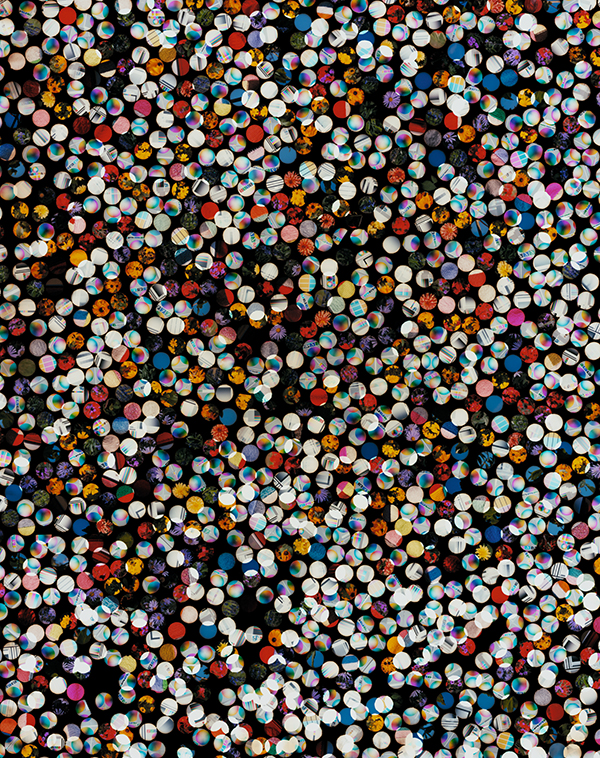
Color spectrums, flowers, and fine grids. Digital labs use such images to test their printers. Jason Evans gathered some, pinned them up, photographed them on color film, hole-punched the film, arranged the tiny disks on glass, put the glass in a photographic enlarger, and made a C-print. It’s the cover of Four Tet’s 2010 album There Is Love in You. A digital/analog image for electronic/analog music.
— David Campany, author, most recently, of Adventures in the Lea Valley, 2016

While its title, Sea Breeze, conjures one specific sound, this picture suggests many others. They are faintly in the background, but just as vivid. There might be waves breaking, seagulls crying, and children’s voices. We are so close that there is also her breath. And overall, the indescribable sound of sunlight.
— Martin Barnes, Senior Curator, Photographs, the Victoria and Albert Museum
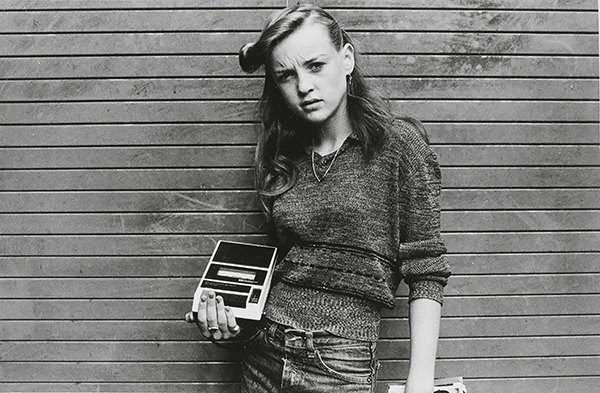
Al Vandenberg’s series On a Good Day was made in Notting Hill in West London in the mid-1970s. His pictures look super cool in retrospect, and none cooler than this totally stylish girl with her portable cassette player. Music lovers of this generation will remember these things, how they sounded, and how quickly the batteries ran out!
— Simon Baker, Senior Curator, International Art (Photography), Tate, London

Despite the title, the sounds that emanate from this picture are not the wailing chords of the eponymous rock bands. Whatever music was recorded on those magnetic tapes left no trace in Marclay’s cameraless cyanotype. Instead, it is the cracking of the plastic cassettes, the yanking of the tape, and the rustling of debris that still resonates. In a word: noise.
— Noam M. Elcott, Associate Professor, Department of Art History
To read more, buy Aperture Issue 224, “Sounds,”or subscribe to Aperture and never miss an issue.
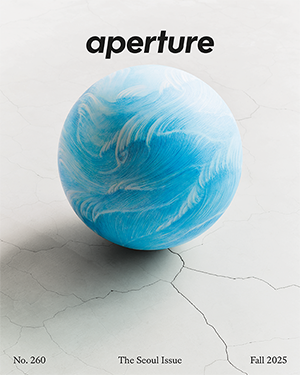
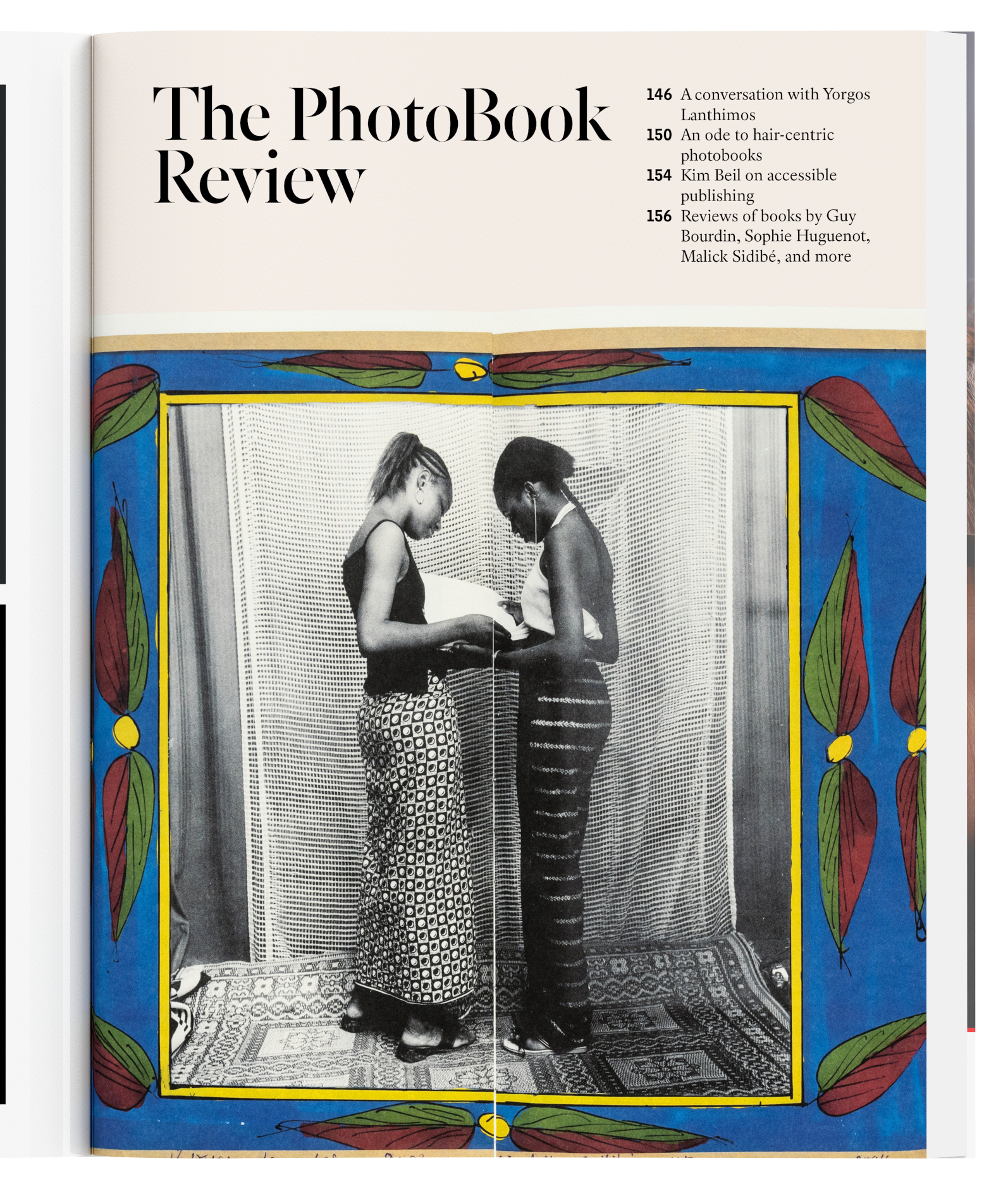


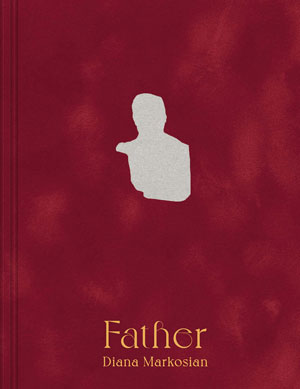





![Elvis Presley [Misc.] Teenagers screaming and yelling during singer Elvis Presley's personal appearance at the Florida Theatre. (Photo by Robert W. Kelley/The LIFE Picture Collection/Getty Images)](https://aperture.org/wp-content/uploads/2016/09/224MAG436_Noisy_Marcus-HR.jpg)
